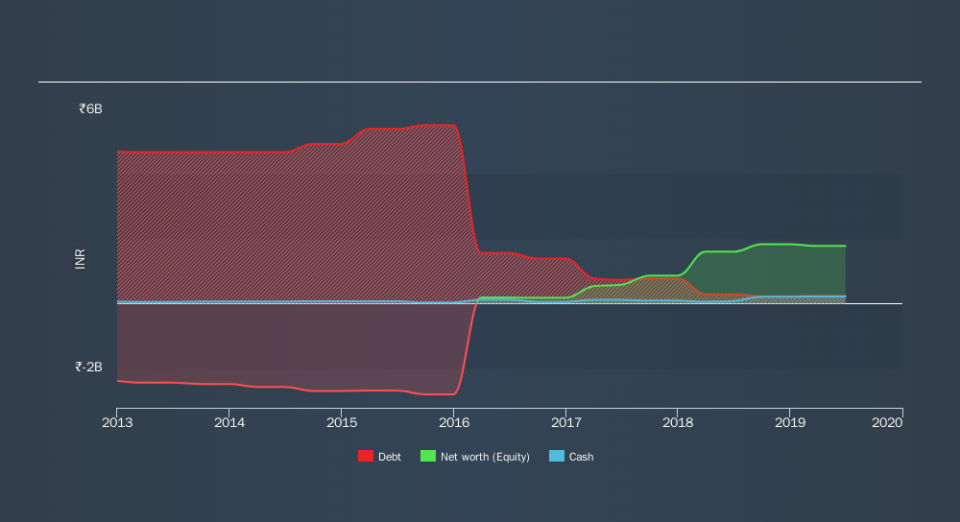Ashima (NSE:ASHIMASYN) Is Making Moderate Use Of Debt

Legendary fund manager Li Lu (who Charlie Munger backed) once said, 'The biggest investment risk is not the volatility of prices, but whether you will suffer a permanent loss of capital. So it might be obvious that you need to consider debt, when you think about how risky any given stock is, because too much debt can sink a company. Importantly, Ashima Limited (NSE:ASHIMASYN) does carry debt. But the more important question is: how much risk is that debt creating?
Why Does Debt Bring Risk?
Generally speaking, debt only becomes a real problem when a company can't easily pay it off, either by raising capital or with its own cash flow. Ultimately, if the company can't fulfill its legal obligations to repay debt, shareholders could walk away with nothing. However, a more common (but still painful) scenario is that it has to raise new equity capital at a low price, thus permanently diluting shareholders. Of course, plenty of companies use debt to fund growth, without any negative consequences. When we think about a company's use of debt, we first look at cash and debt together.
Check out our latest analysis for Ashima
What Is Ashima's Debt?
As you can see below, Ashima had ₹241.9m of debt at March 2019, down from ₹289.3m a year prior. However, because it has a cash reserve of ₹223.8m, its net debt is less, at about ₹18.1m.
How Strong Is Ashima's Balance Sheet?
According to the last reported balance sheet, Ashima had liabilities of ₹400.1m due within 12 months, and liabilities of ₹218.0m due beyond 12 months. Offsetting this, it had ₹223.8m in cash and ₹600.6m in receivables that were due within 12 months. So it can boast ₹206.3m more liquid assets than total liabilities.
This excess liquidity suggests that Ashima is taking a careful approach to debt. Because it has plenty of assets, it is unlikely to have trouble with its lenders. The balance sheet is clearly the area to focus on when you are analysing debt. But you can't view debt in total isolation; since Ashima will need earnings to service that debt. So if you're keen to discover more about its earnings, it might be worth checking out this graph of its long term earnings trend.
In the last year Ashima wasn't profitable at an EBIT level, but managed to grow its revenue by5.7%, to ₹2.6b. We usually like to see faster growth from unprofitable companies, but each to their own.
Caveat Emptor
Over the last twelve months Ashima produced an earnings before interest and tax (EBIT) loss. Indeed, it lost a very considerable ₹101m at the EBIT level. On a more positive note, the company does have liquid assets, so it has a bit of time to improve its operations before the debt becomes an acute problem. Still, we'd be more encouraged to study the business in depth if it already had some free cash flow. So it seems too risky for our taste. When we look at a riskier company, we like to check how their profits (or losses) are trending over time. Today, we're providing readers this interactive graph showing how Ashima's profit, revenue, and operating cashflow have changed over the last few years.
Of course, if you're the type of investor who prefers buying stocks without the burden of debt, then don't hesitate to discover our exclusive list of net cash growth stocks, today.
We aim to bring you long-term focused research analysis driven by fundamental data. Note that our analysis may not factor in the latest price-sensitive company announcements or qualitative material.
If you spot an error that warrants correction, please contact the editor at editorial-team@simplywallst.com. This article by Simply Wall St is general in nature. It does not constitute a recommendation to buy or sell any stock, and does not take account of your objectives, or your financial situation. Simply Wall St has no position in the stocks mentioned. Thank you for reading.

